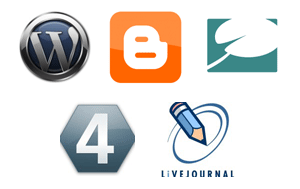DowJones VentureWire Panel on Web Services
When asked about the latest trends of hosted office applications and how they are built, Marco Boerries (SVP Connected Life, Yahoo!) said at the DowJones VentureWire Consumer Technology Ventures Conference (pics) this morning that he did not think it mattered whether these were built in AJAX or Java, what was important was the “openness” of these services. For the office, things like open document formats and rich text editors would continually grow in importance whereas consumers will be mostly about getting media and being able to open it. His response to a question from the audience about open source applications and their future was tepid. Boerries feels that the value chain created by companies such as Microsoft, Intel and Dell is a huge inertia to overcome but the fact is that we do use fewer Windows applications than we did 10 years ago and he looks forward to more Linux-based solutions.
“Less time in front of the PC, more time in front of the phone,” says Boerries. Time that is spent in front of the PC is also changing and Yahoo! is working on the 'lean back user interface', that is, for those who sit back from the keyboard to watch rather than work or create. These interfaces contain less or no menus and they are more simple, more visual. If the cable and satellite guys open up the grip of the set top boxes, Boerries added, there will be a great opportunity for hybrid devices like the one Yahoo! has created with AT&T called Home Zone. Home Zone marries traditional broadcast programming with Internet content.
Next, Larry Gerbrandt, GM and SVP of Neilsen Analytics paneled with Eric Kintz, VP of Global Marketing and Strategy & Excellence among others. Kintz writes HP's most successful blog. Customers and consumers are tuning out to traditional advertising. Nothing new there. But Kintz talked about what HP is doing to respond to that, there several things, he said.
1) HP massively shifted their advertising online. Two years ago, an enterprise campaign (the CIO Dream) launched a huge print campaign. Today they are 100% online for this target and they invite c-level executives online for video and podcasts. Not a new marketing transition, many companies are doing this, however, the activities online visitors are participating in are rich and interactive.
2) More interesting, HP recognizes that they need to follow consumers into their fascination with multiple devices. They are trying out new platforms, placing sponsorships on RSS feeds, doing mobile banners and polls, driving users back to microsites and partnering with companies like Napster to deliver content to the places people are viewing and interacting with services. Viral video promotions are key and are virtually free as someone else is paying for the bandwidth (broadband penetration in the U.S. has reached more than 50%) Gerbrant added. Video is HPs number 1 focus.
3) Finally HP is collaborating with companies like Personiva to offer interactivity, allowing users to play with advertising. Users create their own campaign and blog it. Through programs like this, HP is engaging in a conversation with the customer.
So. Is it working?
So far, anecdotal evidence shows that HP is connecting with young or c-level audiences (a deeper reach) but the experiements are still new. They are currently putting tools in place to track success. Success at HP means that they are selling. The jury is still out on these programs.
After the discussion, I asked Kintz, on a separate note, how HP's internal blogging and wiki programs were performing. He told me that these intel communication mechanisms, which rose out of the engineering teams, have been in play for 2 years and are still growing in awareness and usage. HP offers their employees blogging courses (for both internal and external blogging) to help with this.
“Less time in front of the PC, more time in front of the phone,” says Boerries. Time that is spent in front of the PC is also changing and Yahoo! is working on the 'lean back user interface', that is, for those who sit back from the keyboard to watch rather than work or create. These interfaces contain less or no menus and they are more simple, more visual. If the cable and satellite guys open up the grip of the set top boxes, Boerries added, there will be a great opportunity for hybrid devices like the one Yahoo! has created with AT&T called Home Zone. Home Zone marries traditional broadcast programming with Internet content.
Next, Larry Gerbrandt, GM and SVP of Neilsen Analytics paneled with Eric Kintz, VP of Global Marketing and Strategy & Excellence among others. Kintz writes HP's most successful blog. Customers and consumers are tuning out to traditional advertising. Nothing new there. But Kintz talked about what HP is doing to respond to that, there several things, he said.
1) HP massively shifted their advertising online. Two years ago, an enterprise campaign (the CIO Dream) launched a huge print campaign. Today they are 100% online for this target and they invite c-level executives online for video and podcasts. Not a new marketing transition, many companies are doing this, however, the activities online visitors are participating in are rich and interactive.
2) More interesting, HP recognizes that they need to follow consumers into their fascination with multiple devices. They are trying out new platforms, placing sponsorships on RSS feeds, doing mobile banners and polls, driving users back to microsites and partnering with companies like Napster to deliver content to the places people are viewing and interacting with services. Viral video promotions are key and are virtually free as someone else is paying for the bandwidth (broadband penetration in the U.S. has reached more than 50%) Gerbrant added. Video is HPs number 1 focus.
3) Finally HP is collaborating with companies like Personiva to offer interactivity, allowing users to play with advertising. Users create their own campaign and blog it. Through programs like this, HP is engaging in a conversation with the customer.
So. Is it working?
So far, anecdotal evidence shows that HP is connecting with young or c-level audiences (a deeper reach) but the experiements are still new. They are currently putting tools in place to track success. Success at HP means that they are selling. The jury is still out on these programs.
After the discussion, I asked Kintz, on a separate note, how HP's internal blogging and wiki programs were performing. He told me that these intel communication mechanisms, which rose out of the engineering teams, have been in play for 2 years and are still growing in awareness and usage. HP offers their employees blogging courses (for both internal and external blogging) to help with this.


Comments
Eric
Lisa